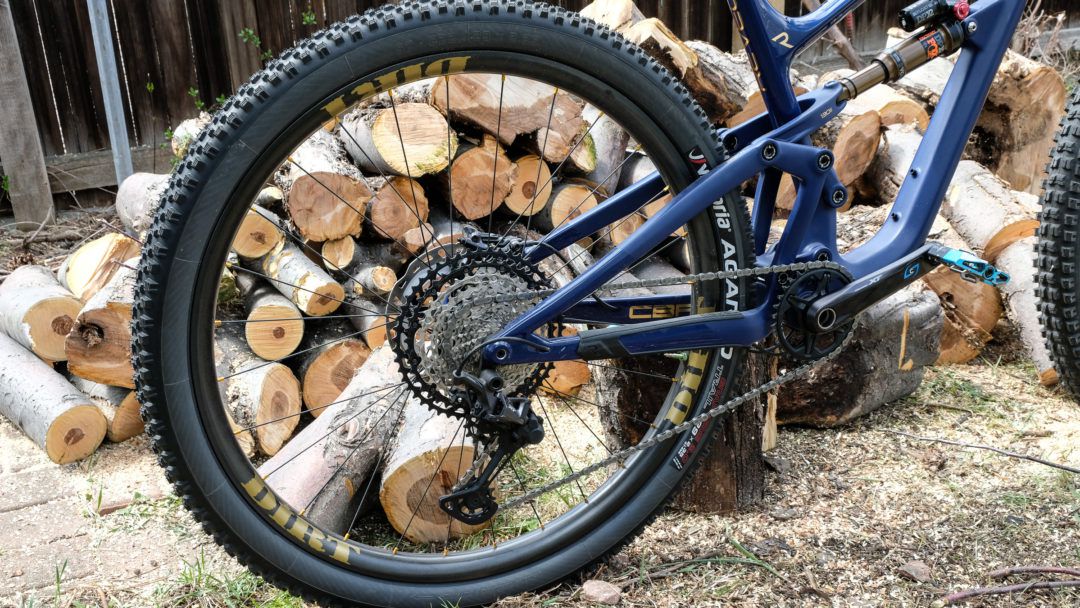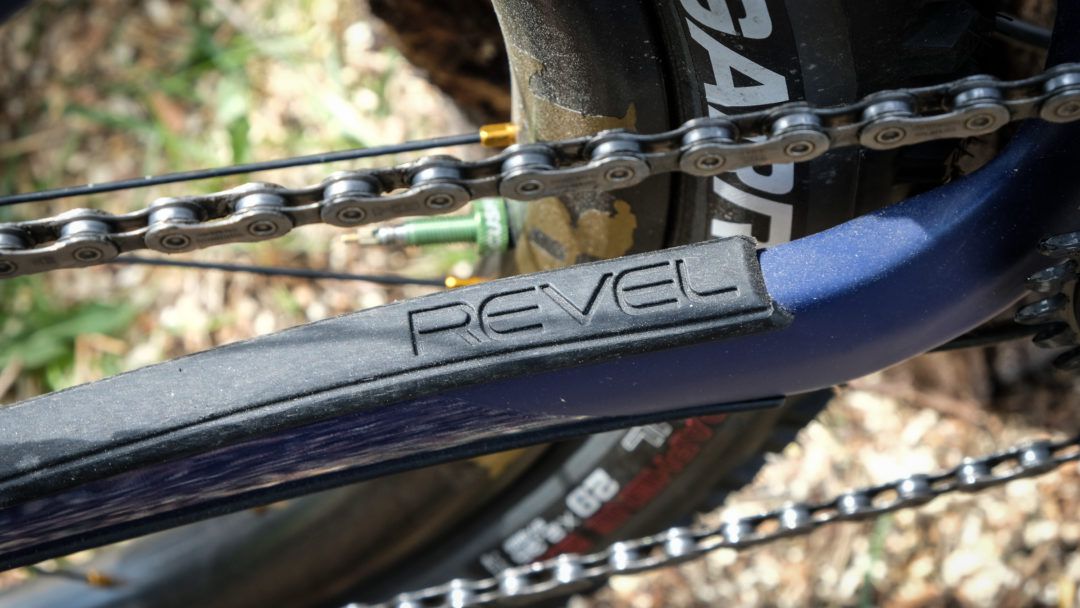Review Rating
Basics
130mm rear travel; CBF Suspension
Pros: Excellent pedaling platform; fast and fun on descents; feels nimble and capable beyond its spec
Cons: Pricey; rear shock blew after only a few rides
Our Thoughts
Revel Bikes has made quite a splash since debuting at Sea Otter last year. In a crowded mountain bike market full of capable trail bikes punching well above their weight, the Rascal stands out for its prowess both up and down the mountain. It climbs like a nimble XC bike and descends like a long-travel enduro bike. You simply can’t ask for more than that; the Rascal has proven itself as the best trail bike of the year.
- MSRP: $2,800 (frame only)
- Size: Large
Related Reviews
Okay, you may not be able to ask for more, but the Rascal certainly delivers more. For starters, the carbon frame is gorgeous, right down to the paint. This bike gets noticed for its stunning appearance, not to mention the Canfield Balance Formula (CBF) suspension. The CBF suspension looks cool, sure, but the real radness is in the ride. You can read a bit more about CBF suspension here in my first ride review of Revel’s longer travel Rail.
Related:
Build Notes
I may have gone a bit overboard with the build on my Rascal.
That’s important to note because my test bike is not a stock build. Not even close. I upgraded the fork to a 160mm Fox Factory 36 FIT GRIP2 — the stock builds come with a 140mm RockShox Pike — so perhaps makes my suspension setup overkill for many trail riders.
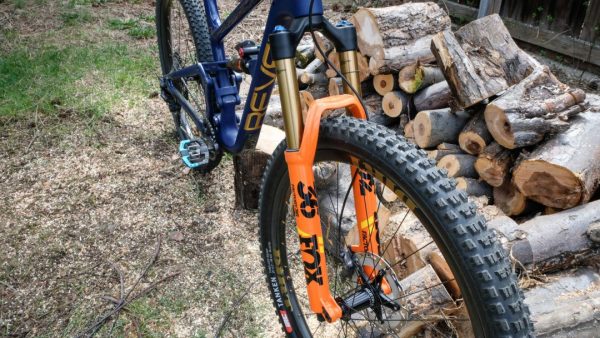
The Rockshox Reverb AXS dropper post operates wirelessly, which means it installs in seconds. It’s very convenient, easy to set up, and smooth-operating. The battery tucks underneath the saddle on the clamp, and battery life seems to last forever. The two downsides: The post costs a whopping $800; and there’s a bit of play in the clamp, which felt a bit clunky at times. After almost a solid year of riding the post, however, it still works flawlessly otherwise.
My Rascal also has a Shimano XT 12-speed drivetrain. This turned out to be an excellent choice as well. Every shift feels smooth and positive, and I get remarkably little chain slap. But I also had to seek out a Microspline freehub body, which was difficult early on after the Microspline system hit the market. There are far more options now, but I still struggle to see why we needed yet another freehub body style.
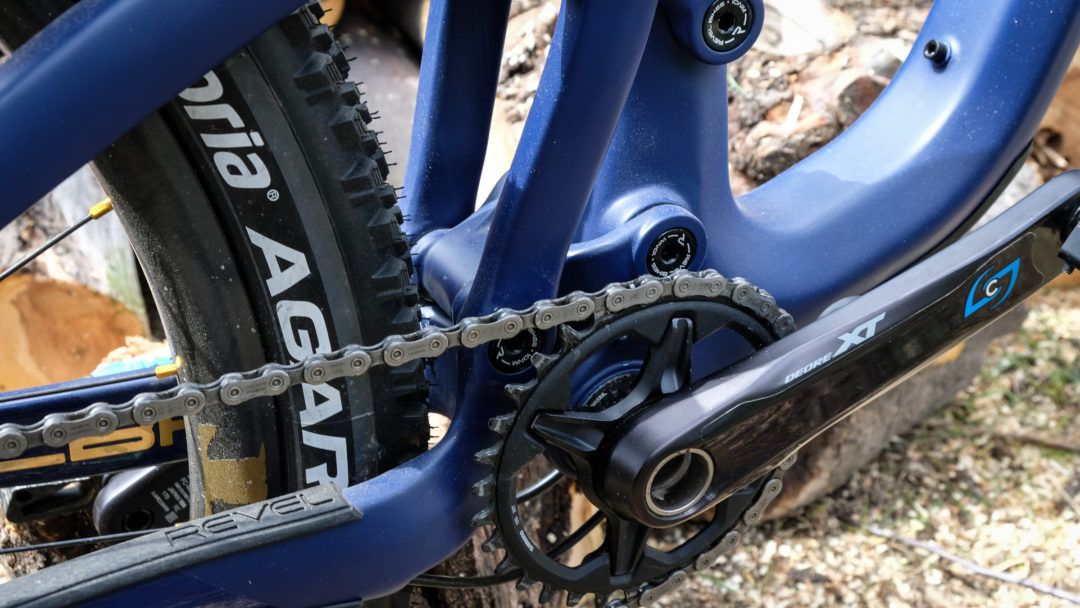
The Rascal’s stock chain guide also didn’t work with the XT crank, which I found odd. So I asked Revel’s founder, Adam Miller about it. “You’re correct, our chain guide was designed to be optimized for use with SRAM Dub cranks/BB,” he said. “It also works with most other modern cranks that use the exact same chain line as SRAM, such as Cane Creek, RaceFace, and others. However, Shimano chain lines are just barely different, so that guide doesn’t work so well with Shimano. We are working on offering more chain guide options for Shimano cranks in the future, potentially made out of Fusion-Fiber like our new Revel Wheels.”
And finally, the Rascal comes stock with a RockShox Super Deluxe rear shock with 130mm of travel. It took me three rides to blow the shock, so I replaced it with a Fox Float DPX2 Factory EVOL. (NOTE: RockShox did offer to replace the shock, but I had the Fox on hand, so I replaced it instead.)
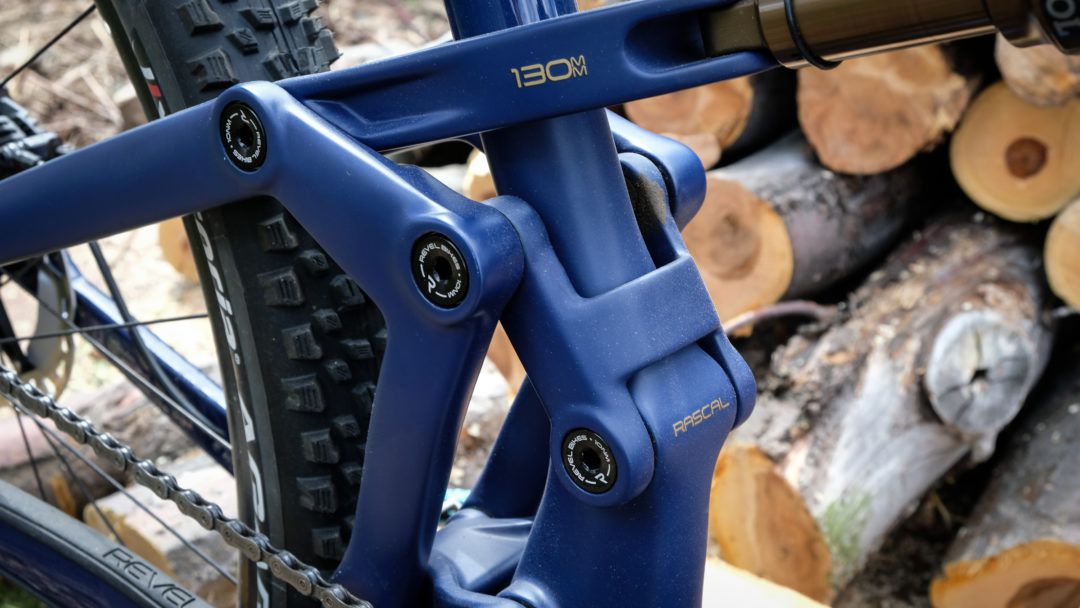
What’s remarkable about the Rascal is its ability punch above its weight both up and down the mountain. Descending at high speeds feels like a totally new experience on the Rascal: It soaks up small bumps with preternatural efficiency, yet big square hits also get tamped down with relative ease. Good shock tune? Perhaps, but the CBF suspension can take credit for much of the Rascal’s exceptional handling. It’s eager to pop out of corners with speed and I never once felt like the Rascal needed encouragement to dive into those corners hard, with no oversteer. The Rascal knew where it was going, every time.
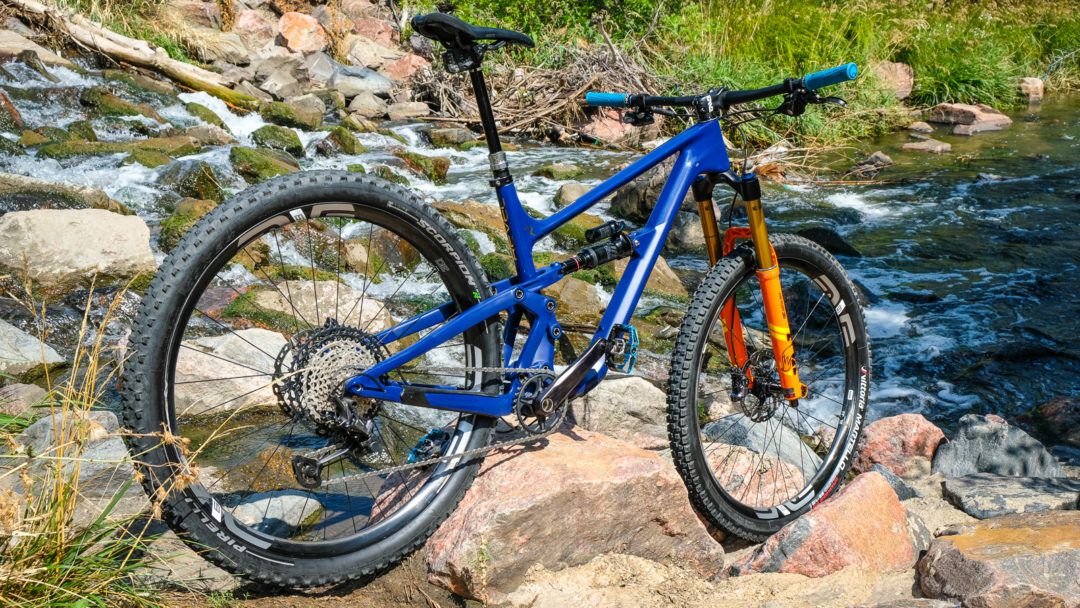
So it’s a truly transcendent descender, yet its climbing prowess is rivaled only by the likes of Yeti’s SB130 in the trail category. No, you won’t mistake it for an XC bike on long, grind-it-out climbs, but are you really looking for that in a trail bike? Probably not, given what you’ll give up on the other side of that hill. Still, you don’t pay much of a penalty when climbing, and it was easy to pop the front end up and over steep rock outcroppings and roots. When settled into a dirt road climb, the Rascal performs best with the suspension locked out, but even when I left it in trail mode, there was only a bit of tempered bob.
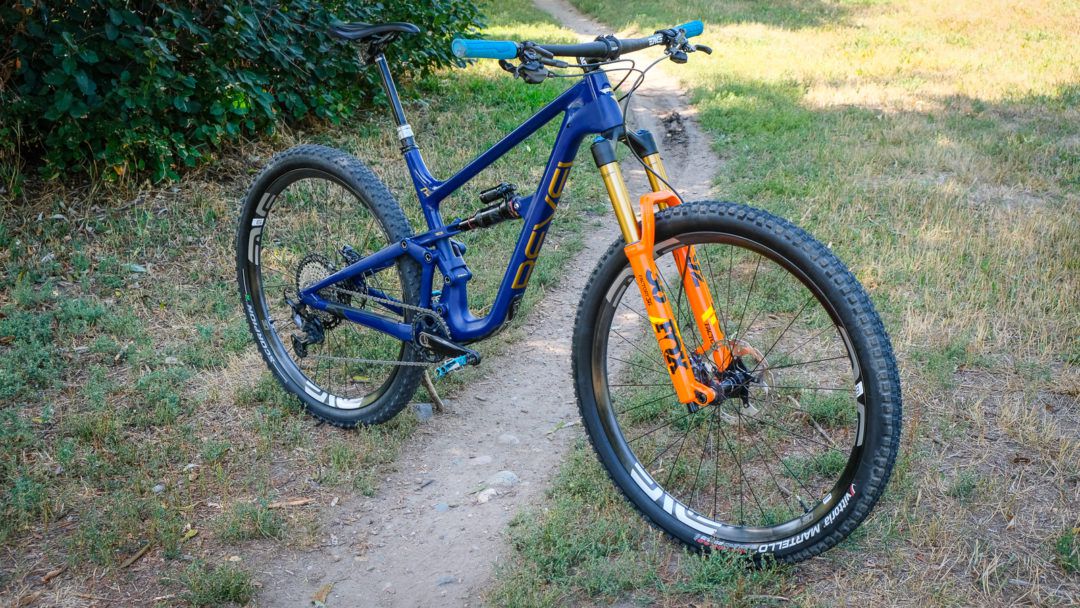
Riding where I should, and where I shouldn’t
Most of the riding I do takes place on the Colorado front range, in Golden. The trails get chunky, and on high-speed descents you’ll immediately get a sense of whether a bike can handle rapid-fire square-edge hits. But before that can happen, you have to grind your way up.
In that sense, the terrain I ride most often is ideally suited to the Rascal, which shouldn’t be too surprising given Revel’s roots in the Rocky Mountains. Revel’s founder Adam Miller knows these trails and has ridden them enough to know what it takes to counter them. The Rascal does just that: The CBF platform feels remarkably supportive on climbs, bobbing only slightly and tracking the ground over obstacles large and small. I found it incredibly easy to pop the front wheel up and over big rocks and steeps, too. That again largely comes back to the CBF suspension, which Revel says can increase anti-squat at the top of the travel and reduce it lower in the travel. That seemed to play out on climbs, especially under herky-jerky pedaling, which is often necessary during technical climbs.
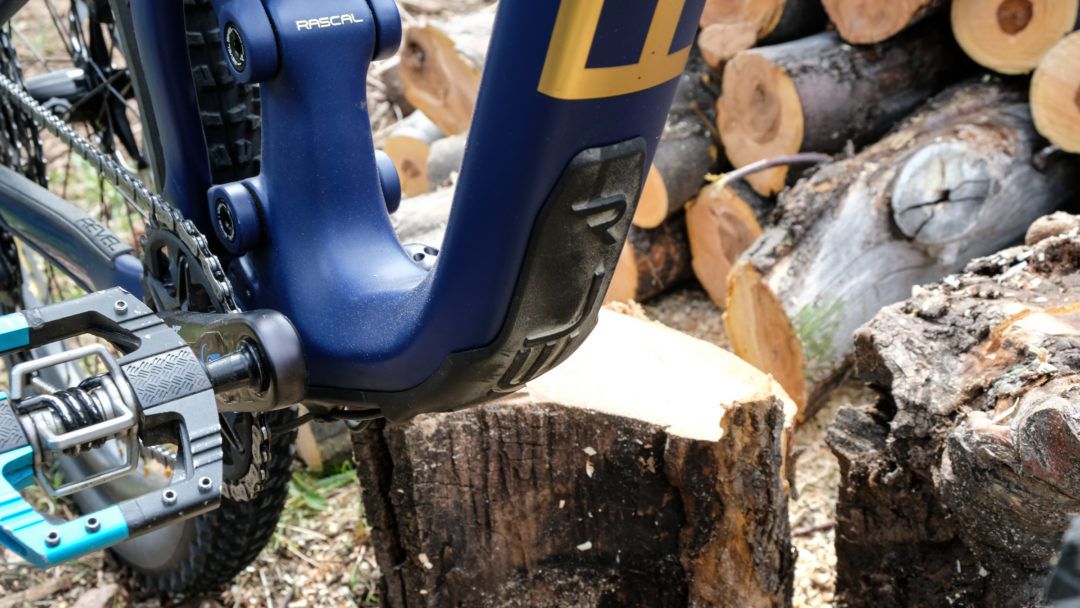
I’m sure there’s some pedal kickback when the suspension compresses, but I didn’t feel much of any.
Braking feels very controlled, due to the anti-rise programmed into the CBF suspension. I can think of some bikes that perform just as well here, but none come to mind that perform better.
I took the Rascal to Winter Park in Colorado to do a lift-service day. This bike isn’t made for that kind of riding, but I went and did it anyway, largely confirming my consistency in making poor life choices. The Rascal saved me from myself, though, and the 130mm of rear travel only felt outmatched on some of the rowdier terrain. Early on in the day I knew the Rascal probably couldn’t handle much of what I was about to put it through; it proved me wrong. I never — not once — got a hard bottom-out.
It was here, on the steep and fast chunk, that I thought I’d be able to tell if there was enough pedal kickback to be bothersome. I waited and waited all day for it. And I’m still waiting today.
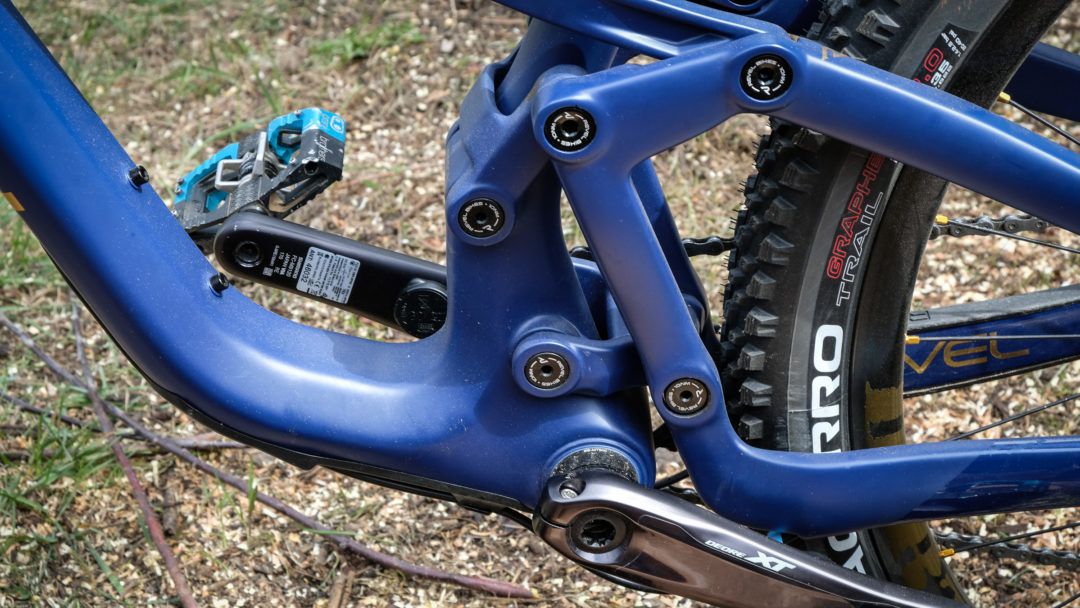
Rascal verdict
I liked the Rascal so much that I bought it. I’m not sure I could give this a more ringing endorsement than that. It does everything I want it to do — climb well, descend like a bat out of hell, and corner with a planted feel I’ve only gotten from a few other bikes, ever. The CBF suspension paired with the Fox fork seems to address big square edge hits with the same efficiency as lighter chatter. The suspension, in general, feels nearly constantly active, except on climbs when I wanted it to settle down. The Rascal and I work together like Alan Trammell and Lou Whitaker pulling a double play: We both know where to be, when to be there, and what moves come next.
This is a remarkable bike with a remarkable rear suspension system that I find to be well-balanced: It’s stable and planted uphill, and bottomless and predictable downhill. Revel got it right on the first try. I can’t recommend the Rascal enough.
